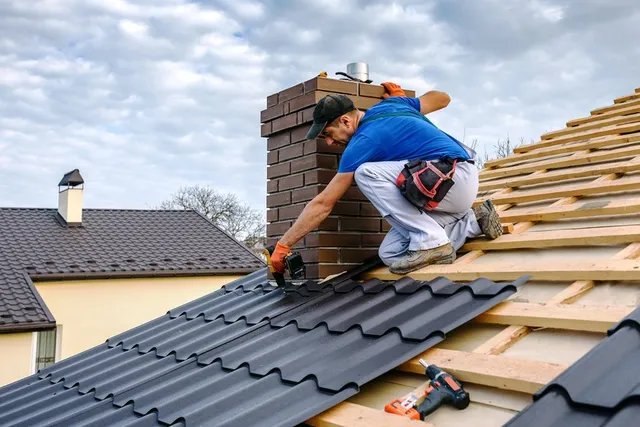When your roof shows signs of wear and tear, understanding the cost of replacement is crucial. This guide breaks down everything you need to know about roof replacement, helping you make an informed decision.
1. How Much Does a Roof Replacement Cost?
The cost of replacing a roof varies significantly based on materials, labor, and location. On average, a roof replacement ranges from $5,000 to $15,000, with most homeowners spending around $8,000. Factors like the size of the roof, pitch, and removal of old materials play a significant role in determining costs.
2. Roofing Costs by Type
Different roofing materials have varying costs. Here’s a breakdown:
- Asphalt Shingles: $100–$200 per square.
- Metal Roofing: $300–$800 per square.
- Clay Tiles: $600–$1,500 per square.
- Slate Roofing: $1,000–$3,000 per square.
Your choice depends on budget, durability, and aesthetics.
3. Full vs. Partial Roof Replacement Costs
A full roof replacement involves removing the existing roof and installing a new one, costing more due to additional labor.
A partial replacement addresses only damaged sections, costing significantly less but may compromise uniformity.
4. Should I Repair or Replace My Roof?
If your roof is relatively new and has minor issues, repairs may suffice. However, if it’s over 20 years old or has extensive damage, replacement is often the better option. Consult a professional for an accurate assessment.
5. Cost to Replace Roofing vs. Repair
- Repairs: Typically cost $150–$1,000 depending on the issue.
- Replacement: Higher upfront cost but offers long-term benefits, especially for older roofs.
Weighing the long-term benefits of replacement against short-term repair costs is key.
6. Additional Roof Replacement Cost Factors to Consider
Several additional factors can influence costs:
- Roof Size: Larger roofs cost more to replace.
- Pitch: Steeper roofs require specialized labor, increasing costs.
- Permits: Some areas require permits, adding to expenses.
- Geographic Location: Labor and material costs vary by region.
7. Signs You Need a New Roof
Some common indicators include:
- Missing, curled, or cracked shingles.
- Water leaks or stains on ceilings.
- Sagging rooflines.
- Excessive granules in gutters.
Addressing these signs promptly can prevent further damage.
8. DIY Roof Replacement vs. Hiring a Professional
- DIY Roof Replacement: Can save money but requires expertise and time. Mistakes may lead to higher repair costs later.
- Hiring a Professional: Ensures quality, safety, and warranty-backed work, though it comes at a higher cost.
For most homeowners, hiring a licensed roofer is the better option.
Frequently Asked Questions (FAQs)
Q1: How often should I replace my roof?
Typically every 20–30 years, depending on material and maintenance.
Q2: Can I install a new roof over the old one?
Yes, but it may void warranties and affect longevity. Removing the old roof is recommended.
Q3: What is the cheapest roofing material?
Asphalt shingles are the most budget-friendly option.
Replacing a roof is a significant investment, but understanding costs and options ensures you make the right decision for your home. Whether you choose a full replacement or a repair, consulting a professional can save you time, money, and stress.

